The "game" of Buzkashi (which has several spelling variations) is a rough ancient sport, viciously fought out by teams of horse riders, using a goat or calf as the ball. A bit like AFL on horseback. It was discouraged but not illegal in Afghanistan, but it could only be found in the far north of the country where it borders the former Russia, but now the -istans, (which means "the country of"), Turkmenistan, Uzbekistan and Tajikistan). A good reference to Buzkashi can be found here.
A spectacular scene. A Buzkashi horseman in full flight with a heavy load. (Still from a movie clip)
The participants came from the border regions and were fiercely protective of their independent lifestyle and freedoms, particularly Buzkashi, their favourite sport. But to get there we had to negotiate the northern highway which led over the Hindu Kush mountains to the plains beyond, and that meant passing through the Salang Tunnel.
-----------------------------------------------------------------------------------------------------------------
The Salang Tunnel
Stop Press, 11 Feb 2010: Avalanche tragedy near the Salang Tunnel, see this news report.
The Salang Tunnel was built by the Russians in the 1960s to improve road communication within Afghanistan and between Russia and Afghanistan. It was a very difficult construction task and it's not rocket surgery to see that there must have been a very strong motive behind this Russian generosity. Even back in 1974 we had heard about potentially untapped reserves of oil and gas in the southern Afghan deserts and the closeness of sea ports for export pipelines. It looked very much to us back then that the tunnel would one day be used for non-domestic purposes, a fear that tragically came to pass in 1980.
Approaches to the south entrance of the Salang Tunnel (top right of photo). It's preceded by several km of avalanche shelters before the road just disappears into the side of the mountain.
View from inside an avalanche shelter.
Looking back down the Salang Pass as we approach the south entrance
Construction of the tunnel was preceded by the building of many km of winding mountain roads and avalanche shelters up through the Hindu Kush mountains. The tunnel itself is 2.6 km long, and at 3,400 m (11,000 ft), it was the highest road tunnel in the world at the time of construction and it's still in the top 2 or 3. For much of the year this area is blanketed by snow and it was suggested that a tunnel was built at this point because they had reached the altitude operating limit of Russian bull-dozers. Either way it was and is an amazing construction.
The road surface is bitumen but it was badly broken up when we went through it. There was no lighting or ventilation systems operating in the tunnel and most alarmingly, it wasn't flat inside, but climbed up to a crest and then suddenly down the other side, all in complete darkness. And in 1974 there was almost no traffic so we did the whole tunnel alone. There was a suggestion that an army jeep would go through the tunnel every day to ensure that no one was stuck but we didn't see one.
Salang Tunnel, north entrance. No avalanche shelters on the northern side
-----------------------------------------------------------------------------------------------------------------
Pul-I-Khumri
It took the best part of a day to get up and over the mountains, and once over the top, no accelerator pedal was required for about 30 miles, which meant the engine got cold and the heater stopped working. Not good. But the northern side was clearer than the south. Still cold but no snow, in fact we had many rainy days when we were "north of the ranges". There was even green vegetation in places as we pulled in for the night at a small hotel in Pul-I-Khumri, a large town about 200 km north of Kabul.
Here we discovered that the people up there spoke Uzbeki, not Dari or Pushtu like those in the south. It didn't matter much to us since we spoke all three languages with equally fluency, but it did indicate that we were heading into border territory where Buzkashi players would likely reside.
Cloudy day in Pul-I-Khumri
Rooftop view of Pul-I-Khumri, with our cars parked in the main street
-----------------------------------------------------------------------------------------------------------------
Khulm
From Pul-I-Khumri we headed on through sweeping sandy plains that stretched to the horizon and probably further, to the pivotal small town of Khulm (formerly Tashkurgan). To the west lay the large centre of Mazar-e-Sharif and the ancient town of Balkh, reputed to be the oldest town in the world. To the north was the Russian border. To the east lay the sweeping plains of central Asia, and it was here we expected to find the elusive Buzkashi.
While in Khulm, whether by chance or because we were the only foreigners in town, we met the "Mayor" (or headman, one is never quite sure), of Khulm. His name was Akbar, as they all seem to be called in this region, but he did seem to have the authority of a mayor and proudly gave us a guided tour of the bazaar where everyone seemed to be either a bother or cousin.
The bazaar in Khulm was an amazing area of mud walled shops, stalls and workshops with the streets covered over in rush matting supported on wooden poles.
The covered bazaar in Khulm. We drove though here!
The locals
We bought a small painted wooded stool that we saw being hand made in a carpenters shop on a rudimentary but effective lathe.
Both ends of a piece of wood, which had been roughly shaped using an adze, were positioned between hollow stones held by the feet of the carpenter sitting on the ground. The string of a bow was wound around the wood and using his right hand it was turned by moving the bow back and forth. His left hand held a chisel against another stone and the wood was turned into surprisingly precise legs and tops.
They were "painted" on the lathe using bars of coloured wax in place of the chisel. Holes in the top were drilled manually and the legs inserted and glued. The end result was quite strong and we used it for many years as a piece of ornamental furniture.
Birds for fighting and our small wooden stool in Khulm. Janet is "chatting" with Akbar, but how?
Akbar and some villagers then took us to a caravanserai (a walled courtyard surrounded by low buildings) and gave us endless glasses of chai (green tea) and showed off their most treasured possessions including old photographs and foreign coins. Akbar also told us, although I don't recall exactly how, that there would be a Buzkashi game next week and he would take us to it if we came back then. This was the news we had been waiting for.
Chai at a caravanserai in Khulm. Akbar in the white turban being "mother".
-----------------------------------------------------------------------------------------------------------------
Mazar-e-Sharif
With a few days to spare, we headed west to Mazar-e-Sharif where there were more magnificent mosques and shrines to visit. The name Mazar-e-Sharif means “tomb of the saint or exalted” and is the alleged to be burial place of Ali, son-in-law of the prophet Muhammad.
The main building is the shrine to Ali, variously called the Hazrat 'Ali Shrine or Blue Mosque, but the word "building" doesn't come close to describing the structure which is one of the most magnificent in Afghanistan. It was built in the 15th century (885 AH on the Islamic calendar) and is covered in blue, yellow and gold tiles. The shrine complex is more than 50m square and has 2 huge blue domes, several minarets and a separate mosque. At night it was garishly lit up with red strip lights.
Once again, a local appeared, on cue, us to guide us around the building and explain all these interesting facts. He was a carpet seller but made no effort to sell us one.
The Shrine to Ali in Mazar-e-Sharif
In the square in front of the shrine lives a large flock of pure white doves and it is said that if a grey dove was ever to land in their midst it would instantly turn white due to the purity of the shrine.
The pure white doves outside the Shrine to Ali
-----------------------------------------------------------------------------------------------------------------
Balkh
We camped in Mazar-e-Sharif at the Balkh Nights Hotel and the next morning set off further west to the town of Balkh, after which the province was named. Balkh had apparently been in continuous habitation for 9,000 years and after Mazar-e-Sharif, it very much looked its age. The walls of the town were crumbling and the bazaars were scruffy and the buildings dilapidated. And it was raining. About the only positive we could discover here was that it's allegedly the only place in the world where cultivated wheat will grow wild. Presumably not GM crops though.
The crumbling city walls of Balkh
A shoe shop in Balkh
The Balkh bazaar
-----------------------------------------------------------------------------------------------------------------
Akcha
So after a cursory look around Balkh we moved west to Akcha, another small town close to the Russian border. We saw many camel trains and horsemen heading north, presumably to Russia, so we tried our luck at getting closer, to get a view of the Oxus River (now called Amu Darya) which forms the Afghan border with Uzbekistan and Tajikistan.
We took a small road north and were going quite well when we were stopped by an armed soldier who gently persuaded us to turn around, using the sharp end of his sub-machine gun. Without a lot of argument, we complied, this was 1974 remember and the cold war had not yet fully melted.
We camped that night at the Akcha Hotel, which sounded rather more grand than the decaying building it actually was. But it was memorable for another reason. The hotel manager wanted to borrow a "wrinch". After some discussion it transpired that he needed a 1/2 inch open ended spanner, but thereafter, even to this day, all tools were known as "wrinches".
-----------------------------------------------------------------------------------------------------------------
Return to Khulm
It was now getting close to Buzkashi day, so the next morning we drove the 130 km back to Khulm, while eagles flew effortlessly beside us from power pole to power pole, and sought out Akbar again. We met at the caravanserai and he said Buzkashi is on tomorrow at 10 am, meet him a 9 am and he will take us there. He was with his granddaughter Annise, a very pretty girl of about 10, who will be coming with us.
[As an aside, although you don't see the faces of many women in public in Afghanistan, when we did, they were invariably very attractive people. Annise is in one of the movie clips coming up later].
We also talked with him about our religious festivals since we suddenly realised that it was Christmas Eve and tomorrow was Christmas Day. We told him it was traditional for us to have chicken for dinner on that day and he said he would try to get one for us. Heaven knows how we communicated all this, but presumably a lot of squawking and flapping of arms was involved. I do remember it being all good fun.
Buzkashi. A family day out, Afghan style
We were up early the next day, being Christmas Day and exchanged gifts in the traditional manner although in the outback of northern Afghanistan little was known of the commercialism of this time and presents comprised whatever we could find in the cupboards.
We drove eagerly to the caravanserai at 9 as arranged, we had obviously developed a blood lust. Akbar arrived at 10 and said the Buzkashi was on at 12. So we sat in his room with our feet tucked warmly under a rug which was draped over a charcoal fire, drinking chai and discussing the lack of alcohol, I think.
Now, it was extremely bad manners to refuse chai when offered it but after several refills, natural functions need to be relieved, which was a bit tricky. As far as we can recall there were no public conveniences in Afghanistan, except those in hotels, and they were of the middle eastern foot print design, the primary requirement for successful use being a perfect sense of balance. I guess we managed to hold on or use a nearby field, which is what the natives did. We had often seen Afghan women (and men) squatting in the fields and now we knew why. [We used the same technique later in India where privacy is non existent, on the basis that if you closed your eyes, no one could see you].
Akbar's three grandsons and grand daughter were there too, all very charming children. They were all apparently coming to the Buzkashi with us and we, apparently, would provide the transport. At 11 we took all 8 people in the Land- Rover a few km up a track to the east, to an open area in the hills where a fairground atmosphere was developing. There were stalls and tents and children's roundabouts made of timber. It was all very jolly in a mediaeval sort of way.
A mediaeval carnival atmosphere at the Buzkashi
Gradually a few horsemen started to arrive as we walked around taking pictures and movies.
[Note: The colour and definition of the following video clips has suffered over the years and during scanning of the old Standard-8 films and conversion for the web, but I think the sense of excitement and spectacle still comes across].
We parked on what we thought might equate to the touchline and a French film crew came and parked next to us. Obviously something important was going to happen.
As the carnival atmosphere developed and the horsemen showed off in front of us, Janet (in bright red trousers) became mother and Pied Piper to some lovely Afghan children.
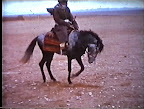
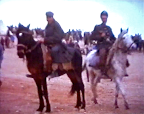

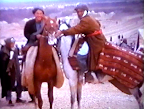
She was obviously enjoying the day, as in the movie clip below, and the fact that she could do this in complete harmony with the local inhabitants indicates just how friendly, trusting and tolerant they were towards us, considering where in the world we were. Would you let your young kids wander off with an unknown Afghan woman at the AFL or cricket?
The carnival atmosphere builds... (1 min 50 sec)
Horsemen began arriving
Preparing the "Ball" (Warning: Disturbing description and movie clip follows)
At 12 the "ball" arrived. This was a fully grown live calf which was walked out to the middle of the playing arena and then hogtied on its side in front of the "VIP tent".
I took my movie camera and walked on to the "pitch". As I started filming this poor beast, 3 or 4 men leapt on to it to hold it down while another wrenched its head back. A 5th man with a very sharp knife then proceeded to slit its throat and allow its blood to gush on to the sand. With bloodied hands and arms he expertly slit the arteries from the neck to the chest to ensure all it's blood was released.
After a minute or so the calf stopped squirming and the next phase of the operation could begin, the removal of its head and front legs. While the man with the sharp knife carefully cut though the vertebrae of the neck and removed it's head, its front limbs below the elbow joints were twisted backwards and then around and around until the tendons snapped, the bones were dislocated and the legs could be cut free. It was surprisingly quick and efficient.
It was not deliberate cruelty, presumably just the Islamic way of slaughtering an animal and done in butchers shops every day. I filmed most of this process (I missed some while changing reels), but through the camera's small view finder of the day, the picture was tiny and it was not until months later when the film was shown on a big screen that I realised the full goriness of what I had captured.
Warning: The following movie clip contains some short but very gory, distressing scenes, definitely NOT suitable for children or the squeamish.
You have been warned.
Warning: Very gory movie clip of the "boz" being prepared (1 min 17 sec).
So after all this butchery on the centre of the arena they had the ball, or boz as it was called, and for the next hour or so a few horsemen, mostly youngsters, made tentative attempts to lift the carcass by the tail or rear legs and pull it on to their saddle in front of them, but it was very heavy, probably still a couple of hundred kg, and they couldn't get very far before dropping it. The crowd had now developed into a 10 or 20 deep throng surrounding the playing arena all intently waiting for something to happen.
And we were parked in the middle of all this activity in our very English white Land Rover, which I used as a tripod, but they didn't give us a second glance.
Play Begins
Around 2 pm the big boys took to the field and play began in earnest. A huge scrum of men and horses suddenly formed in the middle of the arena and they battled each other on charging, rearing horses with short whips and fists to try and get close to the boz. This was no place for the faint hearted. Every now and again one would get a grasp on a leg or tail and drag it a few metres before being dispossessed, and while this was happening the whip was held between their teeth to free up the hands.
Leaning down low enough from their horses to grab the boz from the ground in that madding throng took an impressive amount of strength, courage and skill. They were superb horsemen and only the most experienced players were capable of achieving this. The novices had to circle around, watch and learn.
Superb horsemen riding furiously while carrying the boz (40 sec).
Once in full swing, the players seemed to recognise few rules of etiquette and frequently the man with the boz would be forced off the pitch, and chased by all the other horsemen through and over the crowd and round the back and on to the pitch again. It was very dangerous but the crowd thought it was wonderful. We did too.
Video clip of game highlights (6 minutes)
The only bad part was when a rider was thrown from his horse and crashed to the ground dislocating his shoulder, while his rider-less horse ran away to where one of the crowd tried to stop it. Bones protruded from under the riders coat as he was helped from the pitch, but to where? There was no St John's First Aid Post here and I doubt there would have been many medical facilities in Khulm either. It was presumably just one of the risks they were prepared to take.
The injured rider is helped off the arena. His rider-less horse runs off to where one of the crowd tries to stop it (17 sec)
Back on the pitch, the objective of the game was starting to become clearer. Someone had to gain possession of the boz and, fighting off all other contenders, carry or drag it from one end of the field to the other and past a flag. Like a touchdown in grid-iron.
However, even without its head or front legs, the boz was still too heavy so a time-out was called. The boz was lightened by being dis-entrailed, and we saw young boys, eyes gleaming with delight, as they carried away pieces of offal or lengths of intestine.
A small boy with calf entrails
Action continued for a couple of hours and all through the afternoon pieces continued to fall off the boz until eventually, it was light enough for a rider to pick it up and ride the full length of the pitch and back. That appeared to signal the end of the game and there were wild celebrations amongst the crowd and horsemen. We weren't sure who had won what but we were quite exhausted just watching. It was a great spectacle and thoroughly exhilarating, like the gory combat of ancient Roman Games, without all the (human) bloodshed.
And all on Christmas Day 1974.
Although the spectacle was rough and ferocious, there was no malice or extreme violence involved, the horses appeared unharmed and even enjoyed themselves, and apart from the knife used for killing the calf, we saw no guns, or weapons of any kind. It was a family day out, Afghan style.
Then everyone gradually started leaving but somehow the Land Rover now had 11 people in it. It was getting too squeezy so Janet and Sally hitched a ride in a horse drawn tonga back to the hotel.
After a strenuous and exhilarating day out we needed to take a breather so we left Christmas celebrations for the next day and had an early night.
Something on the radio?
That evening I turned on the shortwave radio and tuned into Voice of America, as usual, to see what was happening. Amid the crackling atmospherics, I recall hearing something about Australia, a hurricane or something had caused some damage in Darwin, I think? It was only a short report but if it had penetrated as far as the Voice of America news room then maybe it was important. But we didn't know much about Australia then, or cyclones, and it was Christmas, and we were having fun, so it soon faded from memory.
It was only months later that we finally understood the enormity of what we had faintly heard, on Christmas Day 1974, on a crackling radio, sitting in the back of a Land Rover, in a small town, in the remote north of Afghanistan.
Boxing Day
So now it was Boxing Day and the promised chicken had turned up. It was a very pretty black and white speckled bantam but it was still very much alive and clucking contentedly. Akbar's grandson had delivered it and we were very pleased, sort of. We hadn't expected it to arrive like this, more like shrink-wrapped, ready to roast.
The poor lad must have sensed our feelings because he took it back and, as we looked on horrified, rang its pretty little neck right there, on the spot. It made a kind of a gurgling noise. Then he took it away and came back a few minutes later with it plucked, skinned, gutted and ready to cook. But under its feathers it was tiny, probably a pound, to feed 4 of us, but we were nevertheless pleased to have one as we hadn't eaten chicken for ages.
He also said there was more Buzkashi on today and would we like to go with Akbar again? Probably something like a return grudge match, so we went of course, it was too good an opportunity to miss, but the girls weren't so interested this time so they stayed in the car talking with Akbar's granddaughter while the boys watched another excellent day's jousting. Then we retuned to the hotel for a glorious Christmas meal with most of the trimmings.
-----------------------------------------------------------------------------------------------------------------
The return to Kabul
Having achieved our objective, we had planned to leave Khulm the next day and return to Kabul, because our visa time was running short. However, being Friday, Akbar had invited us to some bird fights, (the birds were partridges kept in wicker cages, and the fights were called changi), but, while we appreciated his offer, after 2 days of Buzkashi it would have been a bit of an anticlimax so regrettably we declined. In retrospect, in a gory sort of way it would have made an interesting spectacle which you don't get to see every day, like a public hanging, but we didn't really want to witness any more bloodshed. We had our standards and we kept down to them.
The drive back to Kabul over the Salang Mountains and through the tunnel was even more slippery than before due to more snow, and to make matters worse, Mike's Transit had blown its water pump. We had to stop every few minutes to put in more water, but fortunately it held together until we reached Kabul.
After a few more days it was time to leave Kabul for Jalalabad and the border with Pakistan, but Afghanistan was going to throw us a few more curly ones yet. Follow the final chapter of our Afghan adventures here.
Navigation:



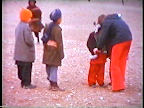
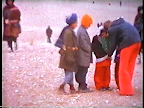
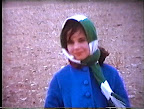


No comments:
Post a Comment